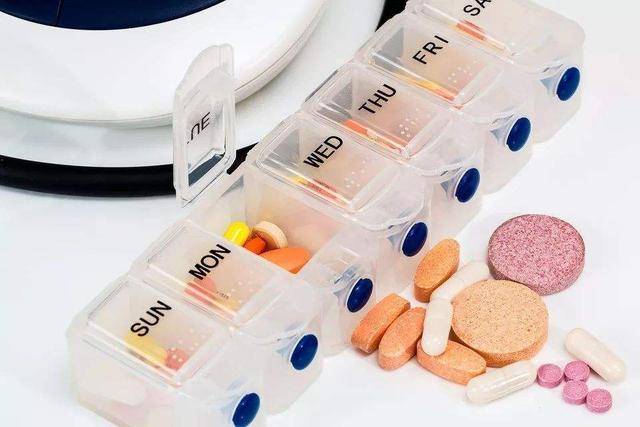Hypertension is a very common chronic disease. Previously, everyone thought that only the elderly could get this disease, and young people would not. But with the increasing number of young people now being affected by this condition, it is known that hypertension is closely related to behaviors that are not paying much attention to one’s own health.
We know that for those with hypertension, the most important thing is to consume less salt. Because the sodium element in salt can cause blood vessels to contract, leading to increased blood volume and thus raising blood pressure. Therefore, in terms of diet, individuals with hypertension need to remember to eat lightly.
As for vegetables and fruits, it is generally believed that there are no restrictions. Vegetables and fruits are nutritious, containing various vitamins and dietary fiber that are beneficial for one’s health. However, for individuals with hypertension, there are certain fruits that need to be avoided as they may stimulate blood pressure.
Let me introduce one fruit here that should never be eaten by hypertensive patients when taking medication! That fruit is grapefruit!
Why shouldn’t hypertensive patients eat grapefruit while taking medication?
Grapefruit contains components that can affect the breakdown of antihypertensive medications. Approximately 45 types of antihypertensive drugs may react with the components in grapefruit, increasing the risk of adverse reactions and even causing significant blood pressure fluctuations, which are not conducive to the condition. Grapefruit contains naringin, bergamottin, and other active ingredients that can inhibit liver enzyme activity, slowing down the metabolism of drugs in the liver. Since patients with hypertension need to take medication daily, this inadvertently prolongs the drug’s metabolism time, effectively increasing the dosage.
Some hypertensive patients, after eating grapefruit while on medication, may experience a sudden drop in blood pressure, leading to symptoms such as dizziness, palpitations, weakness, and even accidents.
Moreover, after consuming grapefruit, its effects on blood pressure can last quite long. Typically, after consuming grapefruit, the maximum impact occurs within 24 hours, and it can persist for 3 to 7 days.
Therefore, hypertensive patients must avoid consuming grapefruits while taking medication. In case of grapefruit consumption, immediate observation, reduction of antihypertensive medication dosage, active blood pressure monitoring, and prompt medical attention in case of any discomfort are necessary.
In addition to avoiding grapefruits while taking medication, hypertensive patients should also try to consume less of the following two types of fruits:
1. Durian
For those who enjoy eating durian, it can be a favorite treat, but for those who dislike it, even the smell is unbearable. Durian is highly nutritious but is not suitable for consumption by hypertensive patients because it is relatively high in sodium content. Regular consumption of durian by hypertensive patients can lead to unstable blood pressure and difficult control.
2. Chilled Watermelon
During the scorching heat of midsummer, people enjoy consuming chilled watermelon to cool off. However, chilled watermelon is also not suitable for hypertensive patients. Hypertensive patients are sensitive to temperature extremes, and chilled watermelon, being cold, can cause blood vessel constriction. With a high water content and low satiety, there is a risk of overeating, increasing the pressure on blood circulation, leading to unstable blood pressure.
How should hypertensive patients eat vegetables and fruits appropriately?
1. Maintain Adequate Vegetable Intake
An appropriate daily intake of vegetables is around one pound. In addition to quantity, the variety should be diverse, with a recommendation to consume three to five types of vegetables daily, with over half being dark-colored or green vegetables. Cooking methods should be light, with less salt and oil.
2. Consume Fruits Moderately
An appropriate daily fruit intake is around 200 grams, with a maximum not exceeding 400 grams. It is advisable to consume at least two kinds of fruits daily. It’s preferable to consume fruits in the morning and afternoon, with 100 grams per serving. Fruits can be consumed an hour after meals, focusing on whole fruits rather than fruit juice or dried fruits.
3. Choose Fresh Ingredients
When selecting ingredients, hypertensive patients should pay attention to choosing fresh produce while avoiding processed, frozen, or canned foods. Pickled foods and other preserved foods should be avoided, and more fresh vegetables and fruits should be consumed. More lean meats such as fish and poultry should be consumed, and red meat should be limited.
Additionally, it is recommended that hypertensive patients consume quinoa regularly. Quinoa is rich in omega-3 which helps reduce blood viscosity and cholesterol content, making it beneficial for individuals with hypertension, hyperlipidemia, hyperglycemia, and other conditions.
In addition to incorporating quinoa into their diet, hypertensive patients can also benefit from regularly drinking natural health teas like gynostemma pentaphyllum tea, which can help cleanse the blood and promote vascular health.
In conclusion, for individuals with hypertension, maintaining a balanced diet is crucial. Aside from adhering to dietary restrictions, having regular and well-balanced meals with low fat and salt content is essential. Eating slowly, monitoring blood pressure levels, following medical advice on antihypertensive medication, staying physically active in moderation, maintaining a positive mood are all vital in controlling and stabilizing blood pressure.


